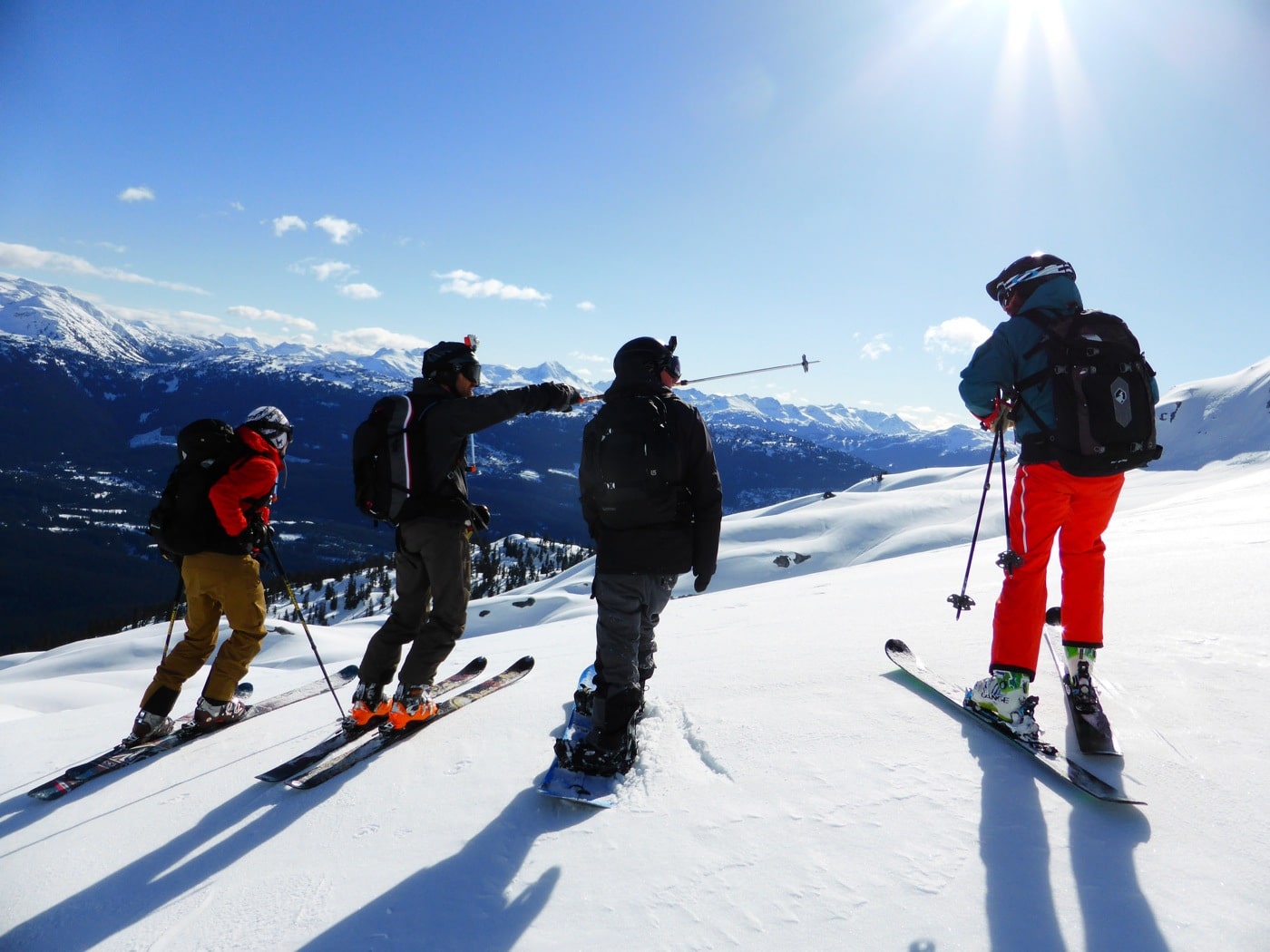With skiing, achieving the perfect balance of technique, speed and leg strength is essential and once these are in sync the resulting sensation of flying downhill floating on bottomless snow is addictive. And as any avid skier will tell you, it’s all about the conditions.
There is a reason the oft-heard phrase, no friends on a powder day, is universally understood at all ski resorts. Perfect powder days are few and far between, even at the snowiest mountains. Fresh snow’s lifetime is brief at best and it isn’t long before tracks mark up every run on the mountain, turning its perfection into crud.
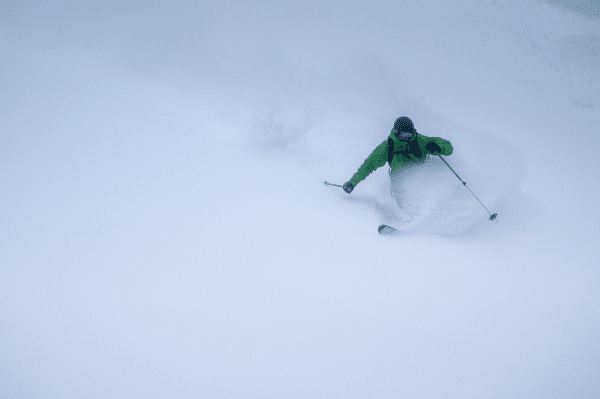
Thankfully, for skiers willing to work a bit harder and pay a bit more – and trust me, it won’t take much convincing after experiencing your first true powder day – backcountry skiing offers nearly limitless powder far away from the crowds.
British Columbia’s powder highway is ground zero for backcountry skiing. It’s home to the world’s highest concentration of heli-skiing and cat-skiing operations, along with countless ski touring trail heads and eight ski resorts.
Heli Skiing
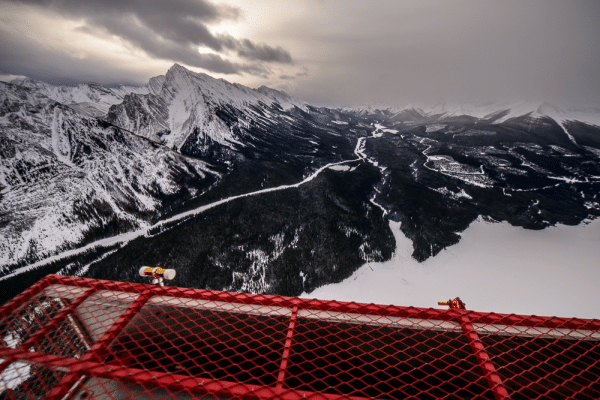
Heli skiing is the undisputed king of backcountry powder skiing and it started at Selkirk Wilderness Skiing. Today, Canadian Mountain Helicopters has taken its place on the throne as the largest heli-skiing company, operating 11 lodges throughout the area.
The idea is simple: flying is the quickest way to ferry skiers up the mountain to the top of long, untouched, powder runs. Thanks to air travel, covering swathes of terrain in an effort to track down the best snow and find slopes that meet any group’s ability level is a cinch.
Most heli-skiing operations include stays at fly-in, fly-out backcountry resorts, which make the experience an all-inclusive trip of a lifetime.
Cat Skiing
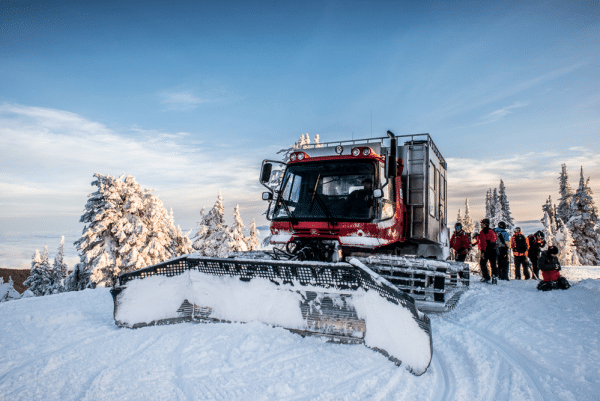
A snow cat is a specialized vehicle that is most often used to groom ski trails. For cat skiing, these machines are modified with an enclosed cab that turns them into the ultimate backcountry taxi. One of the biggest benefits over heli-skiing, aside from being substantially cheaper, is that snow-cats can operate in any weather, while helicopters are often grounded during storms.
Using a network of roads that each cat-skiing operation builds throughout its land tenure, snow cats access a variety of terrain, similar to heli-skiing, but runs are generally shorter and in more forested areas. Group sizes are larger, too, but many skiers enjoy the social aspect of that.
Cat skiing comes in two varieties. Day operations, like Big Red Cats at Red Mountain Resort, operate a day-skiing service that makes it possible to try out backcountry skiing without missing the rest of the resort. Multi-day operations, like Baldface Lodge, are based at all-inclusive backcountry lodges, not unlike their heli-skiing counterparts.
Ski Touring
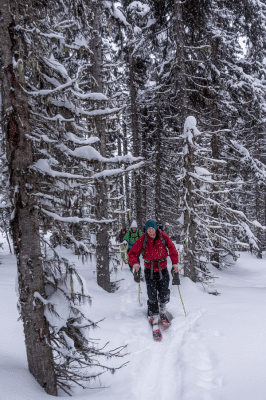
I prefer ski touring to both heli and cat skiing simply because of the silence. I feel it’s a more authentic mountain experience without a noisy machine picking you up for the next run. Instead, skiers earn their turns by hiking to the top of each descent.
To get uphill, skiers use an adhesive climbing skin that goes on the base of the ski. The synthetic material allows the ski to glide forward, but microfibers grip and prevent the ski from sliding backwards. Ski touring bindings release the heel from the ski to create a fluid walking motion. The ski boots have an uphill mode, too, which allows for more ankle movement. The resulting route uphill is called a skin track.
To go downhill, the climbing skins are removed and stowed in a backpack. Both the boots and bindings are flipped to their downhill modes, which makes the skis perform just like any downhill skis. All that’s left is to enjoy the well-earned turns back down.
[alert type=white]
Where to Find Experiential Skiing:
Canadian Mountain Helicopters – Based in Banff, Alberta, Canadian Mountain Helicopters operates 11 backcountry heli-ski lodges throughout British Columbia’s interior. 217 Bear Street, Banff, Alberta; 800-661-0252; www.canadianmountainholidays.com
Baldface Lodge – With more than 32,000 acres, Baldface Lodge is one of the largest multi-day cat-skiing operators and it’s best known for its 500+ inches of annual snow. 309 Jam Factory Lane, Nelson, B.C.; 250-352-0006; www.baldface.net
Big Red Cats – Offering daily departures from Red Mountain, Big Red Cats is the only cat-skiing operation in B.C. to offer separate trips for intermediate, advanced and expert skiers. Red Mountain Resort, Rossland, B.C.; 250-362-2271; www.bigredcatskiing.com
Revelstoke Ski Touring – With two and four day packages, Revelstoke Ski Touring provides an excellent introduction to ski touring in Glacier National Park. Revelstoke, B.C.; 888-837-5417; http://revelstokeskitouring.com/
[/alert]

